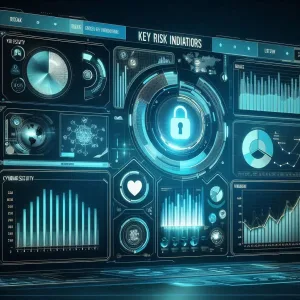In the realm of internal auditing, a team charter serves as a foundational document that outlines the purpose, objectives, and operational guidelines for a team. With tools like a team charter template PPT, it becomes easier to communicate and define these aspects visually, which is particularly crucial for remote internal audit teams, where the absence of physical presence can lead to communication barriers and misalignment of goals. A team charter not only clarifies the roles and responsibilities of team members but also establishes a shared understanding of the team’s mission and values.
Significance of a Team Charter in Internal Audit Settings
The importance of a team charter in internal audit settings cannot be overstated. It provides a structured approach to defining the team’s objectives, ensuring that all members are aligned with the overall goals of the organization. Key benefits include:
- Clarity and Direction: A well-defined charter helps team members understand their roles and the expectations placed upon them, which is essential for maintaining accountability and focus.
- Enhanced Collaboration: By establishing shared norms and guidelines, a team charter fosters a collaborative environment, which is vital for the success of audit projects.
- Risk Management: In internal auditing, identifying and mitigating risks is paramount. A team charter can outline the processes for risk assessment and management, ensuring that the team is prepared to address potential challenges.
Unique Challenges Faced by Remote Audit Teams
Remote internal audit teams encounter distinct challenges that can complicate the development and implementation of a team charter. These challenges include:
- Communication Barriers: The lack of face-to-face interaction can lead to misunderstandings and a lack of cohesion among team members. Effective communication strategies must be incorporated into the charter to address this issue.
- Cultural Differences: Remote teams often consist of members from diverse backgrounds, which can lead to varying interpretations of norms and expectations. A team charter can help bridge these cultural gaps by clearly defining shared values and principles.
- Technology Dependence: Remote teams rely heavily on technology for collaboration and communication. The charter should include guidelines for the use of digital tools to ensure that all team members are equipped to work effectively in a virtual environment.
A team charter is an essential tool for remote internal audit teams, providing clarity, direction, and a framework for collaboration. By addressing the unique challenges faced by these teams, organizations can enhance their audit processes and ensure that their teams operate efficiently and effectively.
Understanding the Unique Needs of Remote Internal Audit Teams
In the evolving landscape of internal auditing, remote teams face distinct challenges that necessitate a tailored approach to team charter development. Addressing these unique needs is crucial for fostering effective collaboration and ensuring the success of audit processes. Here are some key points to consider:
- Communication Barriers and Their Impact on Team Cohesion: Remote internal audit teams often encounter significant communication hurdles. The lack of face-to-face interaction can lead to misunderstandings and a sense of isolation among team members. Clear and consistent communication protocols are essential to bridge these gaps. Regular check-ins and updates can help maintain alignment and foster a sense of belonging within the team, which is vital for cohesion and collaboration [3][6].
- The Importance of Establishing Trust and Accountability in a Remote Setting: Trust is a cornerstone of any effective team, and it becomes even more critical in a remote environment. Team members must feel confident in each other’s abilities and commitment to the audit process. Establishing accountability through defined roles and responsibilities in the team charter can enhance trust. Additionally, recognizing individual contributions and providing constructive feedback can further strengthen relationships and promote a culture of accountability [5].
- Diverse Time Zones and Scheduling Challenges: Remote audit teams often consist of members located in various time zones, which can complicate scheduling meetings and collaborative efforts. This diversity necessitates flexibility and consideration in planning. The team charter should outline strategies for accommodating different time zones, such as rotating meeting times or utilizing asynchronous communication tools. This approach ensures that all team members can participate meaningfully, regardless of their location [8].
- Technology Reliance and the Need for Robust Digital Tools: The reliance on technology is a double-edged sword for remote internal audit teams. While digital tools facilitate communication and collaboration, they also require a certain level of proficiency and access. The team charter should address the need for robust digital tools that support audit activities, such as project management software, secure file sharing, and communication platforms. Additionally, providing training and resources to enhance team members’ technological skills can mitigate potential challenges and improve overall efficiency.
By understanding and addressing these unique needs, remote internal audit teams can develop a comprehensive team charter that not only outlines their objectives but also fosters a supportive and effective working environment. This proactive approach will ultimately enhance the team’s performance and contribute to the overall success of the internal audit function.
The Essential Components of a Team Charter
Creating a team charter is a vital step for remote internal audit teams, as it establishes a clear framework for collaboration and accountability. Given the unique challenges posed by remote work, it is essential to address specific components that will enhance team effectiveness and cohesion. Below are the critical elements that should be included in a team charter for remote internal audit teams:
- Team Purpose and Goals: Clearly defining the team’s purpose and specific goals is fundamental. This section should articulate the mission of the internal audit team, including the objectives they aim to achieve during the audit process. Establishing shared goals helps align team members and fosters a sense of collective responsibility, which is particularly important in a remote setting where team members may feel isolated [1].
- Roles and Responsibilities of Team Members: Each team member should have clearly defined roles and responsibilities to avoid confusion and overlap. This section should outline who is responsible for what tasks, ensuring that everyone understands their contributions to the team’s objectives. Clarity in roles is crucial for remote teams, as it helps maintain accountability and ensures that all necessary functions are covered [4].
- Communication Protocols and Tools: Effective communication is paramount for remote audit teams. The charter should specify the communication tools to be used (e.g., video conferencing, instant messaging, project management software) and establish protocols for regular check-ins and updates. This ensures that team members remain connected and informed, which is essential for collaboration and timely decision-making [3][6].
- Decision-Making Processes: A well-defined decision-making process is critical for remote teams, where face-to-face discussions are limited. The charter should outline how decisions will be made, including who has the authority to make certain decisions and how input from all team members will be solicited. This transparency helps build trust and ensures that all voices are heard, which is vital for team morale and effectiveness.
- Conflict Resolution Strategies: Conflicts can arise in any team, but remote teams may face additional challenges due to the lack of physical presence. The charter should include strategies for resolving conflicts, such as designated mediators or specific processes for addressing disagreements. Establishing these strategies in advance can help prevent misunderstandings and ensure that conflicts are managed constructively.
By incorporating these essential components into a team charter, remote internal audit teams can create a solid foundation for collaboration, enhance their operational effectiveness, and navigate the unique challenges of remote work. This structured approach not only promotes accountability but also fosters a positive team culture, which is crucial for achieving audit objectives in a remote environment.
Creating a Team Charter Template for Remote Audit Teams
Developing a team charter is essential for remote internal audit teams, as it establishes clear expectations, roles, and responsibilities while fostering collaboration. Here’s a practical guide to creating a team charter template tailored specifically for remote audit teams, addressing their unique challenges and dynamics.
Step-by-Step Process for Drafting a Team Charter
- Define the Purpose of the Team: Start by articulating the primary objectives of the audit team. This should include the scope of audits, key deliverables, and how the team aligns with the organization’s overall goals. A well-defined purpose helps in setting a clear direction for the team.
- Identify Team Roles and Responsibilities: Clearly outline the roles of each team member, including their specific responsibilities. This ensures accountability and helps team members understand their contributions to the overall objectives.
- Establish Ground Rules and Norms: Create guidelines that govern team interactions, such as communication protocols, meeting schedules, and conflict resolution processes. This is particularly important for remote teams to maintain a positive and productive environment.
- Set Goals and Objectives: Define measurable goals that the team aims to achieve within a specific timeframe. This could include timelines for audits, reporting deadlines, and performance metrics.
- Incorporate Feedback Mechanisms: Establish processes for regular feedback and evaluation. This could involve periodic check-ins, surveys, or retrospectives to assess team dynamics and performance, allowing for continuous improvement.
Customizing the Template for Different Team Dynamics
- Assess Team Composition: Consider the unique characteristics of your team, such as experience levels, communication styles, and cultural backgrounds. Tailor the language and structure of the charter to resonate with the team members.
- Flexibility in Structure: While a standard template can provide a foundation, allow for flexibility in how the charter is structured. Some teams may benefit from a more detailed approach, while others may prefer a concise format.
- Incorporate Team Input: Engage team members in the charter development process. This collaborative approach not only enhances buy-in but also ensures that the charter reflects the collective values and expectations of the team.
Examples of Effective Language and Structure
- Clarity and Simplicity: Use straightforward language that is easy to understand. Avoid jargon and complex terminology that may confuse team members.
- Positive Framing: Frame guidelines and expectations positively. For example, instead of stating “Do not interrupt during meetings,” consider “Encourage everyone to share their thoughts without interruptions.”
- Visual Elements: Incorporate visual aids such as charts or infographics to illustrate roles, responsibilities, and processes. This can enhance comprehension, especially in a remote setting.
Incorporating Feedback Mechanisms for Continuous Improvement
- Regular Check-Ins: Schedule regular team meetings to discuss progress, challenges, and areas for improvement. This fosters an open dialogue and encourages team members to voice their concerns.
- Anonymous Surveys: Utilize anonymous surveys to gather feedback on team dynamics and the effectiveness of the charter. This can provide insights that may not surface in open discussions.
- Iterative Updates: Treat the team charter as a living document that evolves with the team. Regularly review and update the charter based on feedback and changing team dynamics to ensure it remains relevant and effective.
By following these guidelines, remote internal audit teams can create a comprehensive team charter template that not only addresses their unique needs but also fosters a collaborative and productive work environment. This proactive approach will ultimately enhance the effectiveness of the audit process and contribute to the overall success of the organization.
Addressing Challenges in Charter Development
Creating a team charter for remote internal audit teams presents unique challenges that require careful consideration and strategic solutions. Here are some common obstacles faced during the charter development process, along with proposed solutions to enhance participation and effectiveness.
Overcoming Resistance to Change Among Team Members
Resistance to change is a common hurdle when developing a team charter, especially in established teams. Team members may feel apprehensive about altering their roles or responsibilities. To address this:
- Involve Team Members Early: Engage team members in the initial discussions about the charter. This inclusion fosters a sense of ownership and reduces resistance as they feel their input is valued.
- Communicate the Benefits: Clearly articulate how the charter will improve team dynamics, clarify roles, and enhance overall efficiency. Highlighting the positive outcomes can motivate team members to embrace the changes.
Ensuring Participation and Engagement During the Charter Development Process
Active participation is crucial for a successful charter, yet remote settings can lead to disengagement. To combat this:
- Utilize Interactive Tools: Leverage collaborative platforms such as virtual whiteboards or shared documents where team members can contribute ideas in real-time. This encourages engagement and allows for diverse input.
- Schedule Regular Check-Ins: Establish a series of meetings dedicated to charter development, ensuring that all voices are heard. Regular updates and discussions can keep the momentum going and maintain interest.
Balancing Flexibility with Structure in Remote Settings
Remote teams often thrive on flexibility, but a lack of structure can lead to confusion regarding roles and responsibilities. To strike a balance:
- Define Clear Guidelines: While allowing for flexibility, set clear expectations and guidelines within the charter. This can include defining roles, responsibilities, and decision-making processes to provide a framework for team operations.
- Encourage Adaptability: Emphasize that the charter is a living document that can evolve as the team grows and changes. This approach reassures team members that they can adapt the charter to meet their needs while maintaining a structured foundation.
Utilizing Technology to Facilitate Collaboration and Input
Technology plays a pivotal role in the success of remote teams, particularly in the charter development process. To maximize its potential:
- Select Appropriate Tools: Choose collaboration tools that suit the team’s needs, such as project management software or communication platforms. These tools can streamline discussions and document sharing, making the process more efficient.
- Foster Open Communication: Encourage team members to share their thoughts and feedback through digital channels. Creating an open environment for communication can lead to richer discussions and a more comprehensive charter.
By addressing these challenges with thoughtful strategies, remote internal audit teams can develop effective team charters that enhance collaboration, clarify roles, and ultimately drive success in their audit processes.
Best Practices for Implementing and Maintaining the Team Charter
Creating a team charter is essential for remote internal audit teams, as it provides a structured approach to collaboration and accountability. Here are some best practices to effectively implement and sustain the team charter:
- Regularly Review and Update the Charter: A team charter should be viewed as a living document that evolves with the team. Regular reassessments are crucial, especially during transitional periods or when new team members join. This ensures that the charter remains relevant and aligned with the team’s current objectives and dynamics [6][7].
- Encourage Team Buy-In and Accountability: For a team charter to be effective, it is vital that all team members understand its purpose and feel a sense of ownership over it. Engaging the team in the development process fosters commitment and accountability. When team members contribute to the charter, they are more likely to adhere to its guidelines and principles [4][8].
- Set Up Check-In Meetings: Establishing regular check-in meetings provides an opportunity for team members to discuss their adherence to the charter. These meetings can serve as a platform for addressing any challenges, sharing feedback, and reinforcing the importance of the charter in guiding team interactions and decision-making [5].
- Celebrate Milestones and Achievements: Recognizing and celebrating milestones can significantly enhance team morale and reinforce commitment to the charter. Acknowledging achievements not only motivates team members but also highlights the effectiveness of the charter in facilitating successful outcomes. This practice helps to maintain enthusiasm and a positive team culture [9].
By implementing these best practices, remote internal audit teams can ensure that their team charter remains a valuable tool for fostering collaboration, accountability, and success in their audit processes.
Conclusion
In the realm of remote internal audit teams, a well-crafted team charter serves as a foundational document that not only outlines the team’s mission and objectives but also addresses the unique challenges posed by remote work. The benefits of having a team charter are manifold:
- Clarity and Direction: A team charter provides clear guidelines on roles, responsibilities, and expectations, which is crucial for remote teams that may struggle with communication and alignment. It ensures that all members are on the same page, fostering a sense of unity and purpose.
- Enhanced Collaboration: By establishing shared norms and values, a team charter promotes a collaborative environment. This is particularly important for remote audit teams, where physical separation can lead to feelings of isolation. A charter encourages team members to engage with one another, share insights, and work together effectively.
- Conflict Resolution: A well-defined charter includes processes for conflict resolution, which can help mitigate misunderstandings and disputes that may arise in a remote setting. This proactive approach is essential for maintaining team cohesion and productivity.
As you consider the development of your team charter, we encourage you to utilize the provided template and insights. This resource can serve as a starting point for your team, helping you to tailor the charter to meet your specific needs and challenges. Remember, the creation of a team charter is not a one-time event but an ongoing process.
As your team grows and adapts to new challenges, so too should your charter. Regularly revisiting and updating the document ensures that it remains relevant and effective in guiding your team’s efforts.
In conclusion, investing time and effort into creating a comprehensive team charter is essential for the success of remote internal audit teams. It not only lays the groundwork for effective collaboration and communication but also supports the continuous development of the team. Embrace this opportunity to enhance your team’s performance and cohesion by prioritizing the creation and evolution of your team charter.
Find out more about Shaun Stoltz https://www.shaunstoltz.com/about/
This post was written by an AI and reviewed/edited by a human.



